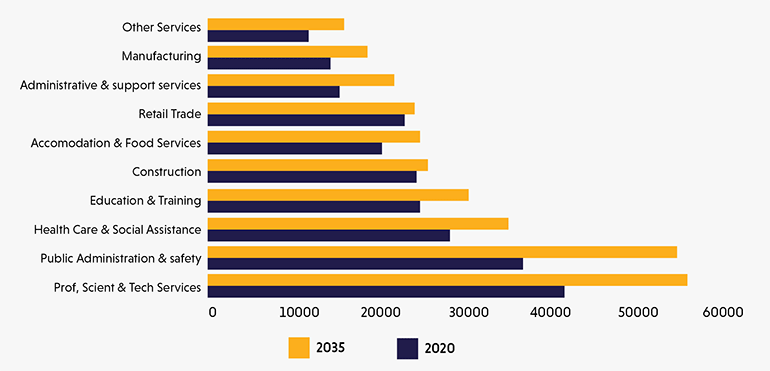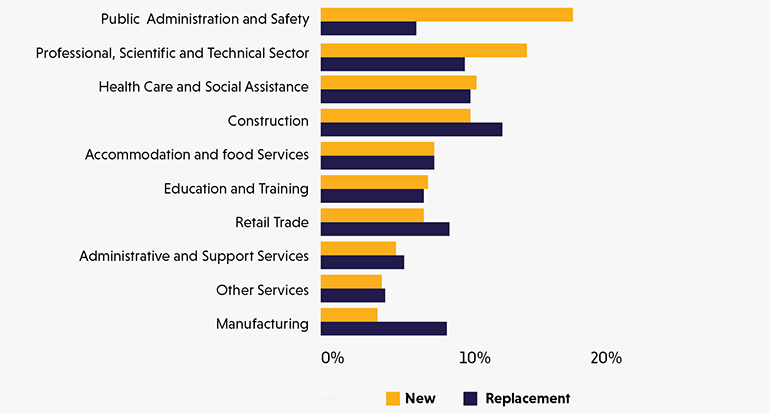What workforce will we need in the future?
On this page
Growing sectors
Between 2020 and 2035, according to Infometrics Employment Projections, the number of jobs in the region is expected to grow by about 70,000 (Infometrics Employment projections 2021). And looking further ahead, the Wellington Regional Growth Framework is planning for 100,000 new jobs in the next 30 years.
Growth will be concentrated around the higher skilled sectors. This means we need to ensure that we are continuing to train people for these roles.
Growth in the region will be concentrated around highly skilled roles

Figure 1: Wellington Region Employment Projections
(Infometrics Wellington Regional Economic Profile)
Text description of figure 1
Other influences on the workforce we’ll need
As well as newly created jobs, a large proportion of advertised roles are to fill existing vacancies. As people shift industries, leave the region or exit the labour market, we need to make sure we have the people with the right skills to replace them. This is especially true in sectors that have ageing workforces.
Addressing existing skills shortages (long-standing in some industries and occupations, including construction and some health roles) will also form part of the challenge of finding our future workforce.
Top 10 industries by job openings (5 total)

Figure 2: Growth by industry 2015 – 2025
(Infometrics Wellington Regional Economic Profile)
Text decription of figure 2
The skills we will need
We need to have the right systems in place to help people upskill and retrain to meet both current shortages and the future demand for skills. While we do not know exactly how our region will change over the coming years and what the skills implications are, we know that it will change.
As technology evolves, the skills needed in existing roles will shift; for example, there’ll be an increase in electric vehicles, or new farming practices. As we transition to a low carbon economy this will have impacts on the shape of industries, the kinds of jobs available and the skills required to do them. STEM (science, technology, engineering and mathematics) and digital skills will be an increasingly vital feature across all sectors. While we do not currently know what the changing technical skills needs are in sectors, we have identified this as an area for us to develop with the proposed industry sector groups (as detailed in the action plan).
The construction sector has a history of boom and bust. We need to ensure that the training for this sector ensures workers are equipped with transferrable skills, giving them protection against future downturns and the ability to easily pivot to new ways of working.
Equally, due to our growing digital sector we need to make sure we have people with the digital skills for these roles. A 2020 study of the sector identified that the biggest job growth is projected in data analytics followed by cyber security skills.
Our work with sectors has also identified a range of non-technical soft skills which are required across all roles. This includes problem solving, thinking critically, being innovative, effective communication and being able to deal with ambiguity. How to more effectively equip our workforce with these soft skills is an open question.
There is also a growing importance of te reo Māori and Mātauranga Māori as the partnership between the crown and Iwi/Māori strengthens.
< About our region | Where will we find our future workforce? >

